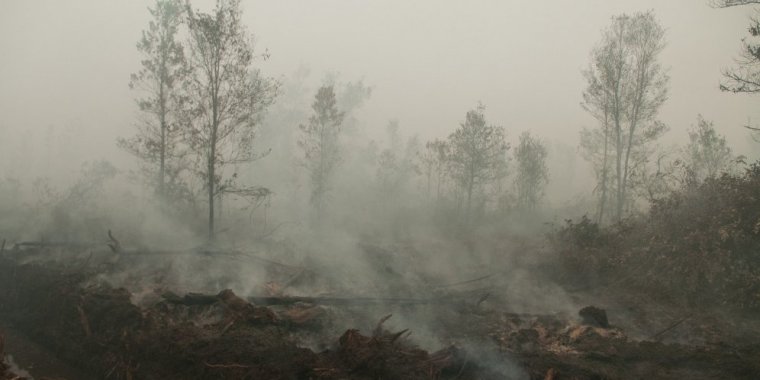| World |
Ozone pollution shrinks tropical forest growth
While the ozone layer in the atmosphere protects the earth from the sun’s radiation, at the ground level, ozone is a pollutant that reduces the growth of tropical forests and their ability to absorb carbon, new research shows.

Thick smoke from peat fires near Palangka Raya, Central Kalimantan, Indonesia. Tropical forests are vital in capturing and storing carbon dioxide that would otherwise stay in the atmosphere and contribute to global warming. Photo: Aulia Erlangga/CIFOR
Tropical forests are vital “carbon sinks” – capturing and storing carbon dioxide that would otherwise stay in the atmosphere and contribute to global warming.
According to a study, ground-level ozone, which forms as a result of the burning of fossil fuels, has prevented the capture of 290 million tonnes of carbon per year since 2000.
“Tropical forests play a crucial role in mopping up our carbon dioxide emissions,” said co-lead author Alexander Cheesman, a senior research fellow at the University of Exeter, UK and James Cook University, Australia.
Ozone, which is also harmful to human health, is a short-lived molecule in the atmosphere but is continuously being formed by reactions with other compounds such as nitrogen oxides, he explained. It is formed by the combination of pollutants from human activities in the presence of sunlight.
The researchers calculated that ground-level ozone reduces yearly growth in tropical forests by 5.1 per cent. In some regions the impact was greater, with Asia’s tropical forests losing 10.9 per cent of new growth.
They estimated that ozone has resulted in a 17 per cent reduction in carbon removal by tropical forests so far this century. Monitoring ozone pollution and improving air quality will be vital to protect these carbon sinks, the researchers say.
“Our ability to model and predict how the earth will react to a rapidly changing climate requires having a good understanding of how rapidly changing factors like air-pollution will impact systems in the coming decades,” said Cheesman.
Co-author Flossie Brown, a professor of atmospheric chemistry at the Swiss public research university ETH, Switzerland, explained that under high ozone exposure the carbon removal ability of vegetation is decreased.
“Our research shows that ozone in the tropics can decrease the amount of CO2 tropical forests can remove. Without action to reduce ozone pollution, trees may absorb less CO2 than predicted,” said Brown.
“Ozone concentrations across the tropics are projected to rise further,” due to increased emissions such as NO2 and chemical changes to the atmosphere as a result of global warming, she added.
The researchers say more work is needed to increase understanding of how changing air quality now and in the coming decades will impact tropical systems.
Lisa Emberson, an environmental pollution biologist in the Department of Environment and Geography, University of York, UK, told the research provides important new evidence that tropical forest trees are as sensitive to ozone pollution as the more comprehensively studied temperate and boreal forests.
“Given the crucial role we hope these tropical forests are going to play in carbon sequestration and in turn achieving net zero 1.5C climate targets, the new evidence provides a cause for concern that the carbon sink of these forests may be substantially less then envisaged due to the damaging effects of ozone pollution on tropical tree growth,” she said. (SciDev.Net)
YOU MAY ALSO LIKE





